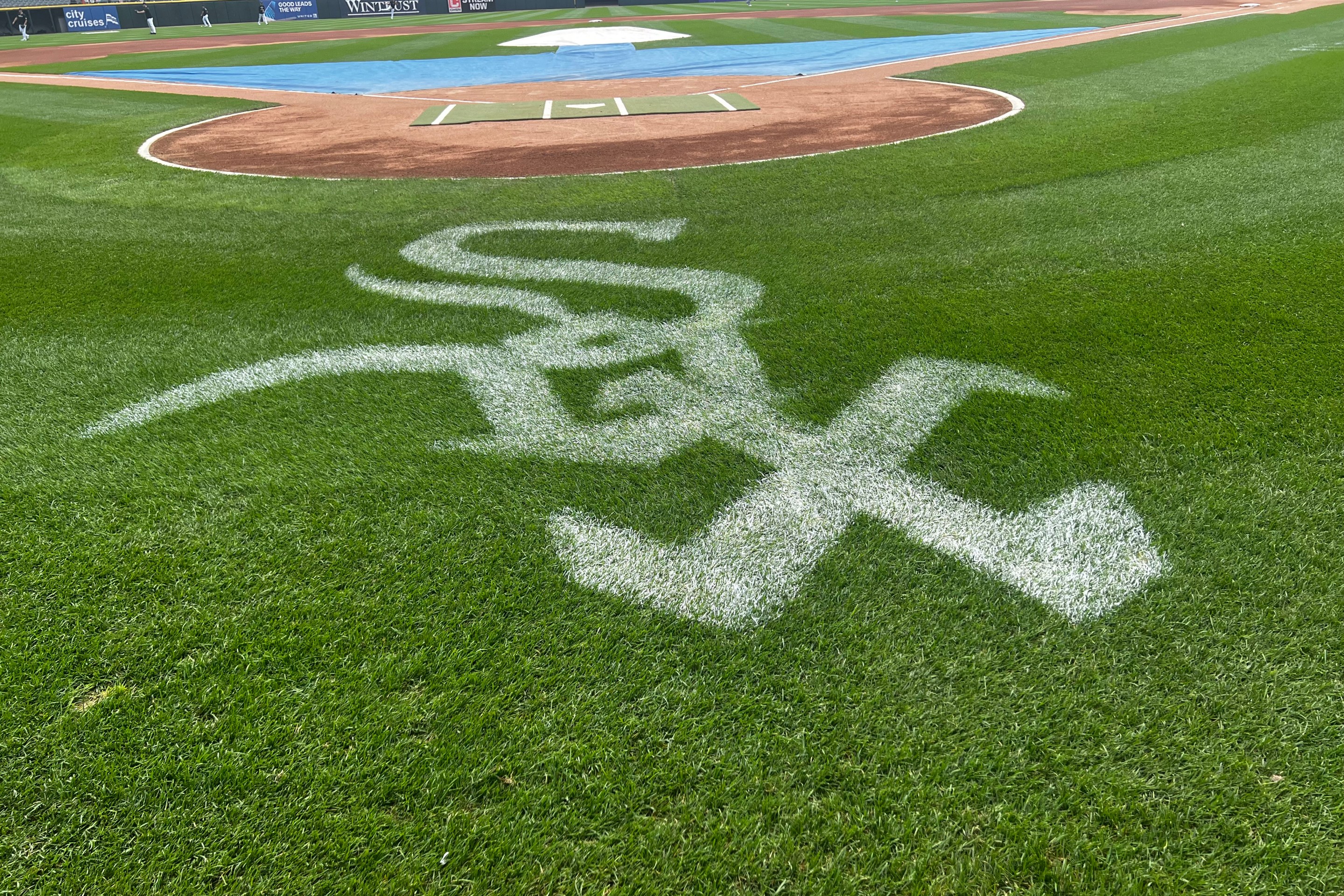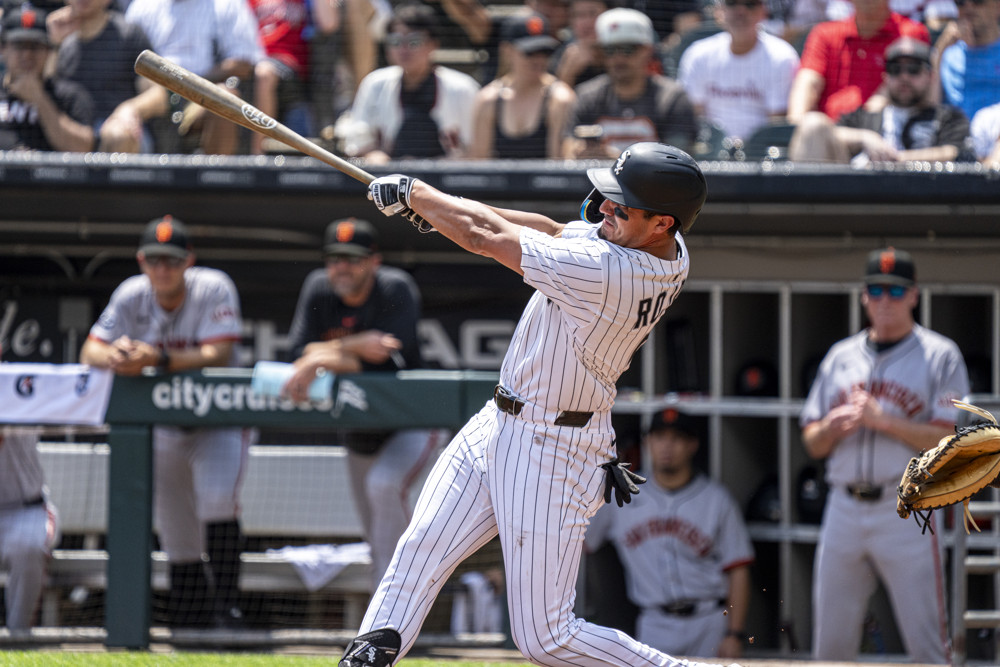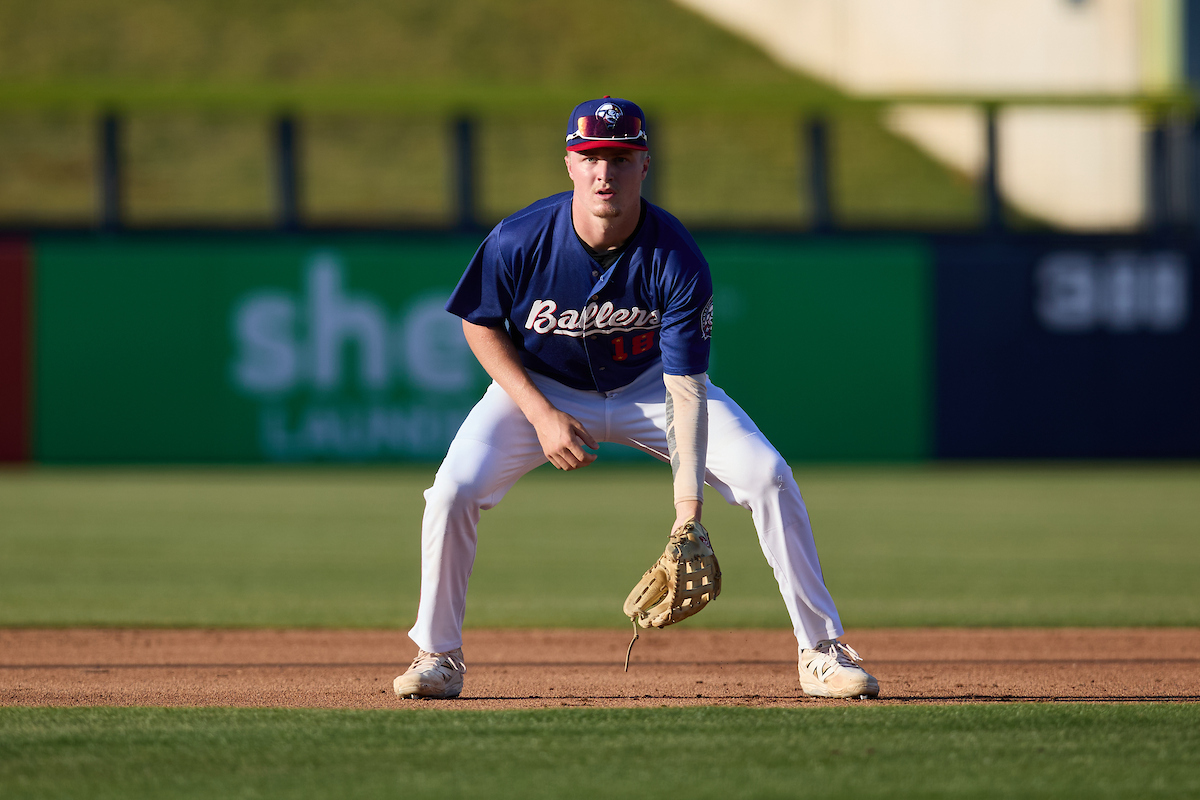If you thought Martín Maldonado looked out of sorts during his first time catching Garrett Crochet in spring training, the veteran backstop would probably agree.
"The first couple of times he looked at me like, 'What's going on? Why is the ball doing this?'" said pitching coach Ethan Katz. "He's a tough one to catch."
Not only does Crochet throw upper-90s with some of the best delivery extension in the league, but his four-seam fastball will unexpectedly cut to his glove side, and sometimes it will explode through the top of the strike zone with above-average carry, and at this point the variation is not intentional.
"There's times where he really stays behind it well and there's time where he gets on the side of it," Katz said a couple hours before Crochet threw seven innings of one-run ball against a fearsome Braves lineup Tuesday night. "That's where his vert [inverted vertical break] can drop to 13 [inches], and there's times he can ride it up at 19. It varies. It's not intentional ... as of now. But it makes his fastball even more unique because you don't know -- from the standpoint of the hitter -- what it's going to do."
Two quality starts into Crochet's return to the rotation, and that natural cut seem to be effectively harnessed, as he's striking out a third of opposing hitters with the best command of his career. Tasked with facing a long slate right-handers in each of his outings, as he surely will be for the rest of his career, Crochet has taken ownership of the inner half of the plate with a heater that will bore in on the hands as surely as it will ride at the letters.
This tendency has also surprisingly been turned into the one neat trick that makes Crochet the Starter seem much more sustainable. Every baseball-loving human should have the chance to see Crochet's enormous hands split between his middle and ring fingers to form the vulcan changeup grip he's been working on since last offseason, which could still come to bear fruit with time. But the hunt for a balancing third pitch in Crochet's arsenal has momentarily settled upon a low-90s cutter that's emerged as an effective strike-grabber for him, after originating as a Plan B.
"This offseason I was trying to make my slider harder and then develop a curveball so I would still have the slow, bigger breaking ball," Crochet explained to me this weekend. "But once I started making my slider harder, the shape of it kind of went to shit. So instead of bridging it from the bottom and bringing the slider up, I'm leaving the slider what it is and that's why I brought in the cutter. It's just something between the fastball and the slow boy."
That little something between the fastball and the slow boy is something Crochet turned to 14 times Tuesday night against the Braves, after sprinkling in eight cutters on Opening Day. Despite Crochet conceding that the "characteristics of it aren't too drastically positive or negative," sandwiching it between his slurvy-sweepy wipeout slider and his overwhelming fastball turns the cutter into the rug that ties the room together. If you simply went by whiffs and called strikes, it was Crochet's most successful offering against the Braves.
"It's a very easy pitch: He naturally cuts his fastball at times and it just gets him in a really easy hand position to just throw it a little bit like a fastball with a little bit of cut and let it work for him," Katz said. "The cutter right now is the pitch where if he falls behind and needs to grab a strike, he knows that's where he needs to go to. We're also giving him information on guys where he can identify who he can use the cutter a little bit more with.
"In the past, he's thrown his slider historically for strikes. Last year that obviously wasn't the case, but we can go grab a [strike] without showing his bigger breaking ball and save it until the end."
It's all the more delightfully curious that Crochet had this breakthrough, because fashioning a harder slider has been his white whale since after the 2020 season. His slider started morphing into a curveball while rehabbing his forearm strain, and working the shape back to a harder and sharper slider has had peaks and valleys.
Even now as it generates admirable amounts of whiffing, Crochet would readily admit that his slider feels like a slurve at times, and has the horizontal movement of a sweeper. But he doesn't call it that because he's trying to set his intention to throw through it as much as possible, lest it get any loopier than it can already become at times. The slowiest, slurviest slider Crochet threw at the tail end of his outing Tuesday night got lifted up into the jet stream by Marcell Ozuna for a sub-100 mph exit velocity homer, cranking his ERA on the season up to 1.38.
Katz shot down any notion of my fledgling Justin Steele comparison, since the Cubs left-hander varies the cut and ride on his four-seam with too much intent to be analogous to the developmental stage Crochet is occupying. But as the 24-year-old has found the glove side command to shift his career as a starter from aspirational to inspired in a few weeks' time, the cutter is providing a similar clarifying effect to his approach.
"Introducing it just allowed my heater to be what it is and not having to force it," Crochet said. "Before I think I've tried to get around it a little bit, maybe not intentionally, but if I was going glove side for sure. The cutter just makes it easier to get there."





